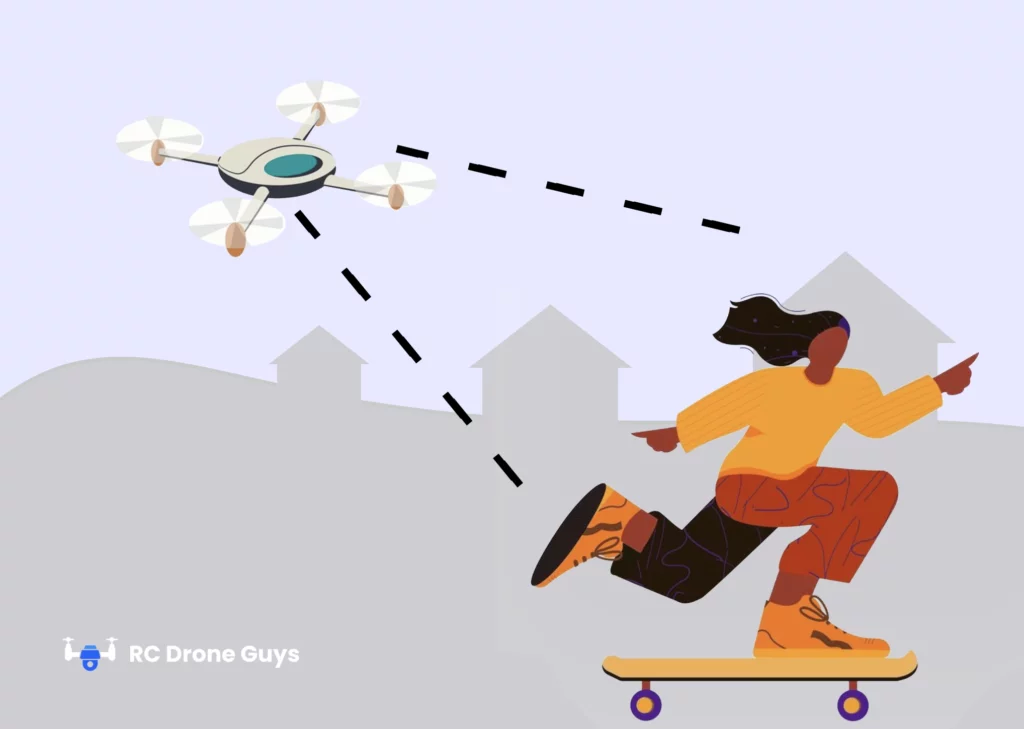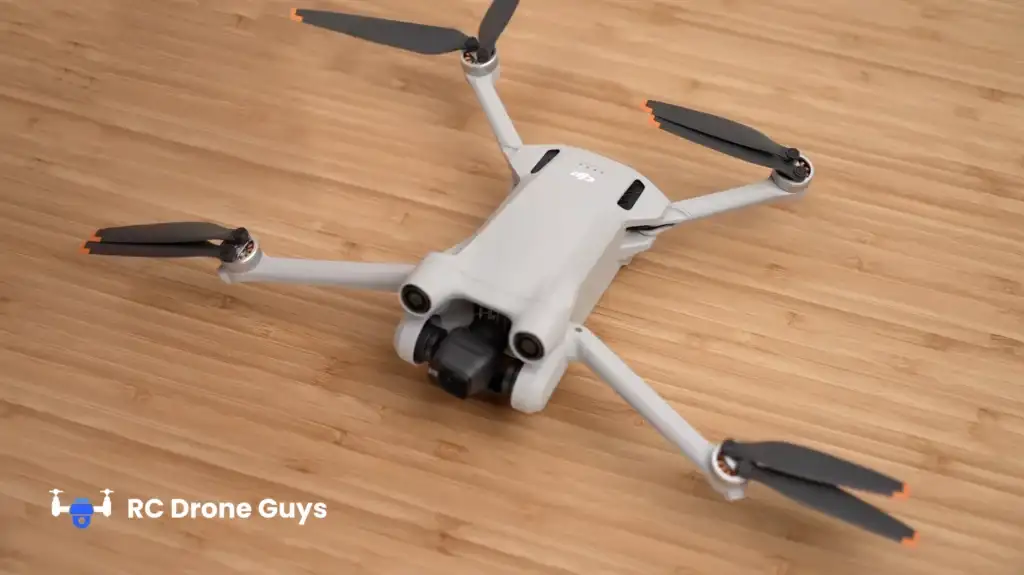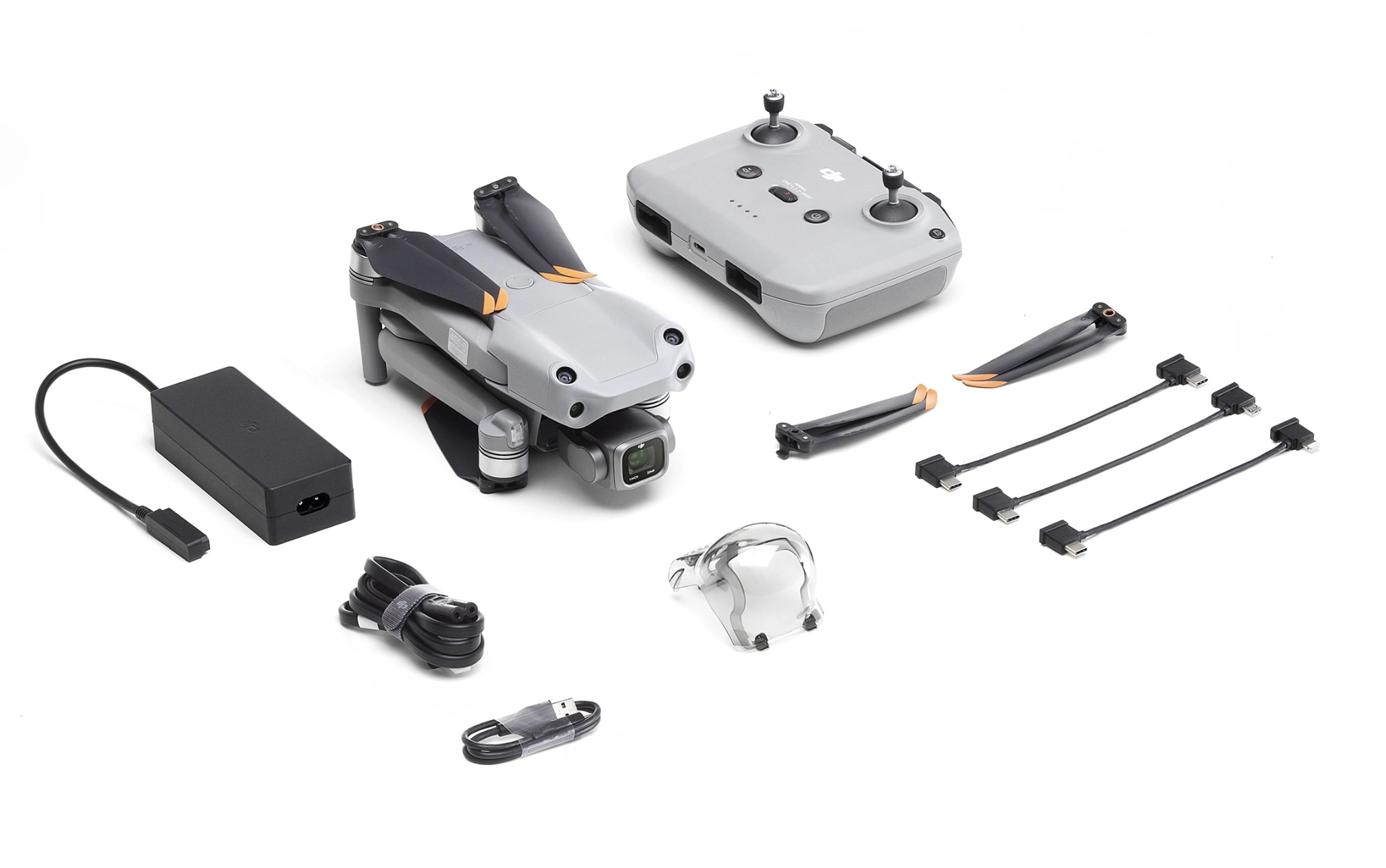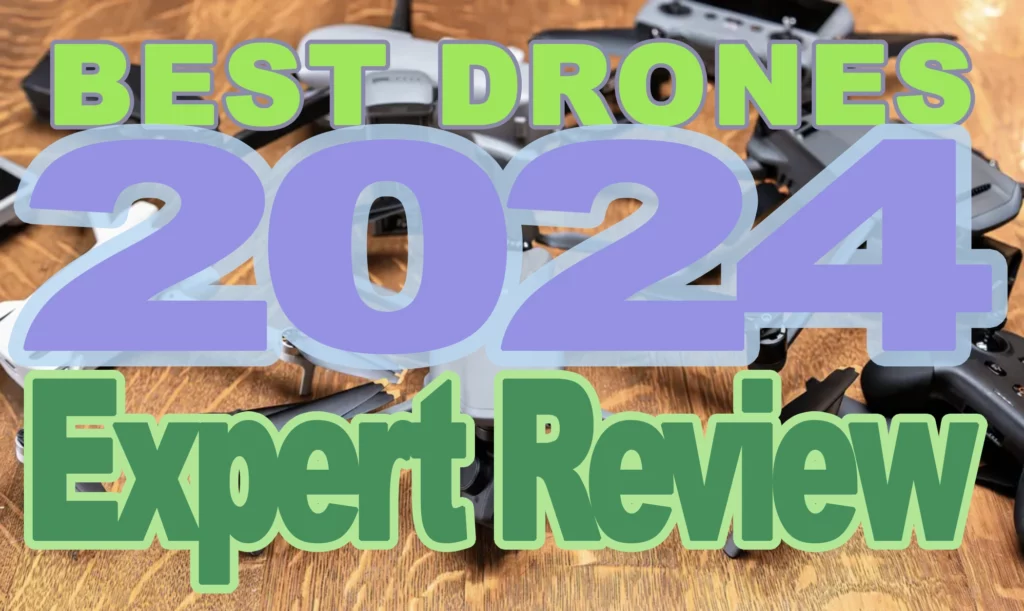-
DJI Maciv 3 Pro
 Price: $2199Shop Now
Price: $2199Shop Now- Dimensions: 3.8 by 3.9 by 9.1 inches
- Weight: 2.1 lb
- Camera: Integrated with Gimbal
- Video Resolution: 5.1K
- Fly time: 43 mins
-
DJI Air S2
 Price: $999Shop Now
Price: $999Shop Now- Dimentions: 264 x 310 x 50mm
- Weight: 595g
- Camera: 1″ CMOS, 8.38mm f/2.8 lens
- Resolution: 20 MP
- Fly Time: 31 mins
-
Skydio 2+
 Shop Now
Shop Now- Weight: 775 g
- Dimensions: 43 x 129 x 19.5 mm
- Camera: Sony IMX577 1/2.3 inch CMOS
- Effective pixels: 12 MP
- Battery life: 27 minutes
-
DJI Mini 3 Pro
 Price: $803.25Shop Now
Price: $803.25Shop Now- Dimensions (folded): 3.5 x 2.4 x 5.7 inches
- Weight: 8.8 oz
- Camera: 1/1.3'' CMOS
- Resolution: 4K/60fps video
- Fly time: 34 minutes
-
Nano+ by Autel
 Price: $859Shop Now
Price: $859Shop Now- Weight: 8.8 oz
- Dimensions: 10.24 × 12.80 × 2.17 inches
- Camera: 4K
- Effective pixels: 48M
- Battery life: 28 minutes
Looking for the best follow me drones to effortlessly capture your moves? Every drone featured has been meticulously evaluated for its tracking precision, ease of use, and performance quality. Bypass the guesswork – our guide has done the heavy lifting to help you make a smart decision with quick comparisons and straightforward insights.
With the Snapshot Overview above of the Best in Class Follow Me Drones, we can now do an in-depth review of each drone in the list.
But first, lets look at the difference bewteen active tracking and the folow me mode.

The Difference Between Follow Me and Active Track
The terms “Follow Me” and “Active Track” often pop up when discussing drones, but what’s the difference between these two modes?
In essence, Follow Me mode functions through GPS tethering, establishing a virtual link between the drone and a GPS-equipped mobile device, enabling gps tracking. Once activated, the drone will follow the path of the device, keeping a constant distance.
This is ideal for tracking relatively slow and predictable movements.
Contrarily, Active Track employs the drone’s tele camera and sensors to keep the target within the frame using active tracking.
It can follow the subject even when it changes direction or speed, making it perfect for tracking unpredictable or fast-paced movements.
However, it’s worth noting that Active Track may hover if the object goes out of sight and may not perform optimally in low-light conditions, which could limit its effectiveness in certain situations.
Best Overall Follow Me Drone: DJI Mavic 3 Pro

BUY NOW
Specifications:
Dimensions: 3.8 by 3.9 by 9.1 inches
Weight: 2.1 lb
Rotors: 4
Obstacle Detection: Integrated
Camera: Integrated with Gimbal
Megapixels: 20 MP
Video Resolution: 5.1K
Media Format: microSDXC, Internal
Remote: Dedicated with LCD
Live Video Feed: 1080p
Pros ✅
- Stabilized, triple-camera array
- Wide-angle Four Thirds camera with Hasselblad color
- Medium tele camera: Midrange 3x lens shows excellent picture quality
- Up to 5.1K30 or 4K120 video
- All-around obstacle sensors
Cons ❌
- Base model has just 8GB of onboard storage
- Falls shy of promised 43-minute flight time
- Only the pricey Cine model supports ProRes
For the discerning users who seek only the best, the DJI Mavic 3 Pro reigns supreme in the world of follow-me drones. I’ve flown this bird myself, and I was blown away by the quality it offers.
Its features include:
- Triple camera array for stunning photo and video capture
- All-around obstacle sensors to prevent crashes
- Follow-me mode for capturing fast-moving subjects
The DJI Mavic 3 Pro is truly a top-of-the-line DJI drone that delivers exceptional performance and reliability, making it one of the best dji drones on the market. However, it is not without its drawbacks.
The DJI Mavic 3 Pro has the following features and limitations:
- Comes with just 8GB of onboard storage which can be used up quickly when shooting in high resolution
- Boasts an impressive 43-minute flight time, but real-world tests often fall short of this
- Delivers excellent performance and quality
Despite these minor shortcomings, the DJI Mavic 3 Pro is well worth its price tag.
Rating:
Design: 4.5/5
Performance: 4.5/5
Battery Life: 4/5
Value for Money: 4/5
Key features including dimensions, weight, camera specs, and video resolution.
In terms of key features, the DJI Mavic 3 Pro brings a lot to the table. For starters, it comes equipped with a 4/3 CMOS Hasselblad camera, capable of producing professional-quality photos and videos.
So, whether you’re capturing a sunset or filming a high-speed mountain bike race, you can expect stunning results.
Another key feature of this drone is its obstacle sensing capabilities. The DJI Mavic 3 Pro is equipped with omnidirectional obstacle sensing, which enhances flight safety by minimizing the chances of collisions.
This feature is particularly useful when flying in complex environments, where accidents can be costly.
Best Compact Follow Me Drone: DJI Air 2S

BUY NOW
Specifications:
Sensor size: 1in CMOS
Resolution: 20MP
Lens: 22mm f/2.8 (35mm equivalent)
Gimbal: 3-axis
Max video resolution: 5.4K/30p
Max bit-rate: 150Mbps
Transmission system: Ocusync 3
Weight: 595g
Dimensions: 180x97x77mm (folded), 264x310x50mm (unfolded)
The flight time is 31 minutes. It is a relatively short journey.
Pros ✅
- 1-inch 20 MP sensor
- Great image quality
- Small and lightweight
Cons ❌
- Controller isn’t foldable
- Image edges slightly soft
- No adjustable aperture
If a compact follow-me drone is what you’re after, the DJI Air 2S is a real treasure. It’s small enough to fit in a backpack, but don’t let that fool you, this drone packs a punch. It features a 1-inch 20 MP sensor, delivering high-quality images and videos that are comparable to larger drones.
It’s also equipped with advanced features like obstacle detection and avoidance sensors, making it a reliable choice for novice and experienced pilots alike.
What distinguishes the DJI Air 2S from others in its class is its compact dimension. It’s designed to be portable and convenient, making it perfect for travelers and adventure seekers. However, there are a few minor downsides.
The controller isn’t foldable, which can be a bit of a hassle when you’re on the go. And while the image quality is generally excellent, the image edges can be a tad soft. But despite these minor drawbacks, the DJI Air 2S offers outstanding value for the price.
Rating:
Design: 4.5/5
Performance: 4/5
Battery Life: 4/5
Value for Money: 4.5/5
Highlighting the sensor size, resolution, lens, gimbal, and max video resolution.
Probing further into the DJI Air 2S’s camera and video capabilities reveals more.
The drone is equipped with a 1-inch CMOS sensor, which enables it to produce high-quality images and videos.
This is particularly impressive considering the drone’s compact size.
The DJI Air 2S offers the following features:
- Supports video capture at a 4K30 resolution
- Captures stunning, high-resolution footage that’s smooth and detailed
- Perfect for recording scenic landscapes or exciting action sequences
With the DJI Air 2S, you’ll never miss a moment.
Best Obstacle Avoidance: Skydio 2+

BUY NOW
Specifications:
Dimensions: 43 x 129 x 19.5 mm
Weight: 775 g
Rotors: 4
Obstacle Detection: Integrated
Camera: Integrated with Gimbal
Megapixels: 12 MP
Video Resolution: 4K
Media Format: microSD, microSDHC, microSDXC
Remote: Smartphone/Tablet App, Dedicated with App, GPS Beacon
Live Video Feed: Yes
Pros ✅
- Portable form factor
- Amazing obstacle avoidance
- Automatic video recording
Cons ❌
- Disappointing camera
- Short battery life
- Only works in daylight
For navigation through a densely populated forest or a complex urban landscape, a drone with advanced obstacle avoidance capabilities becomes a necessity. Enter the Skydio 2+.
This drone’s ability to avoid obstacles is nothing short of exceptional, thanks to its obstacle avoidance sensors.
It’s powered by AI and equipped with a powerful processor that runs nine custom deep networks, enabling it to efficiently navigate tight spaces and avoid obstacles at speeds up to 36 mph.
However, while the Skydio 2+ excels in obstacle avoidance, its camera performance leaves something to be desired. With a 12.3MP Type 1 sensor and a 20mm (equivalent) f/2.8 lens, it delivers performance comparable to that of a smartphone or entry-level drone like the DJI Mini 2.
Additionally, the drone’s battery life is relatively short, clocking in at just 27 minutes. Despite these drawbacks, the Skydio 2 still stands out for its exceptional obstacle avoidance capabilities.
Rating:
Design: 4/5
Performance: 3.5/5
Battery Life: 3/5
Value for Money: 3.5/5
Detailing dimensions, weight, rotors, and camera capabilities.
With dimensions of 43 x 129 x 19.5 mm and a weight of 775 g, the Skydio 2+ is both compact and lightweight. It’s equipped with 4 rotors that provide stability and control during flight.
When it comes to camera capabilities, the Skydio 2 is equipped with:
- A 12 MP camera that’s integrated with a gimbal for stabilization
- The ability to capture smooth and stable footage
- Support for video capture at a 4K resolution, enabling you to capture high-quality videos.
Best Value Follow Me Drone: DJI Mini 3 Pro

BUY NOW
Specifications:
Sensor: 12.1MP 1/1.3in CMOS
Video/max frame-rate: 4K/60p, 2.7K/60p, 1080/120p
Max bit-rate: 150Mbps
Stabilization: 3-axis gimbal
Transmission: Ocusync 3
Max flight time: 34 mins
Weight: 249g
Dimensions (folded): 145 x 90 x 62mm
Dimensions (unfolded): 171 x 245 x 62mm
Pros ✅
- Impressive low-light performance
- Useful obstacle avoidance
- Handy automated flight modes
Cons ❌
- Pricier than previous Mini models
When it comes to drones that offer the best bang for your buck, the DJI Mini 3 Pro is a tough competitor to surpass. It’s equipped with advanced features like impressive low-light performance, obstacle avoidance, and automated flight modes, all packed into a compact and lightweight design, making it a top choice for a cheap drone.
While the DJI Mini 3 Pro might be a bit pricier than previous Mini models, its advanced features and improved performance make it well worth the investment. Additionally, it comes with a 12.1MP 1/1.3in CMOS sensor, which delivers high-quality images suitable for social media and other primary purposes.
However, the standout feature of this drone is its obstacle detection and avoidance sensors, which provide an additional layer of safety during flight.
Rating:
Design: 4.5/5
Performance: 4.5/5
Battery Life: 4/5
Value for Money: 4.5/5
Outlining sensor details, video frame-rate, stabilization, transmission, and max flight time.
A more detailed examination of the DJI Mini 3 Pro’s camera and video capabilities is warranted.
The drone is equipped with a 12.1MP 1/1.3in CMOS sensor, capable of producing high-quality images and videos.
Whether you’re capturing a breathtaking landscape or filming an exhilarating action sequence, you can expect stunning results.
The DJI Mini 3 Pro offers the following features:
- Video capture at 4K/60p, 2.7K/60p, 1080/120p resolutions
- Stunning, high-resolution footage that’s smooth and detailed
- DJI O3 transmission system for a reliable and strong connection between the drone and the remote controller.
Best Lightweight Option: EVO Nano+

BUY NOW
Specifications:
Dimensions: 3.7 by 5.6 by 2.2 inches
Weight: 8.8 oz
Rotors: 4
Obstacle Detection: Integrated
Camera: Integrated with Gimbal
Megapixels: 50 MP
Video Resolution: 4K
Media Format: microSDXC
Remote: Dedicated with App
Live Video Feed: Yes
Pros ✅
- Ultra-lightweight design
- 4K30 camera
- Obstacle detection
Cons ❌
- Not as refined as lesser-priced rivals
If portability is your main concern, the EVO Nano+ makes an excellent choice. It’s ultra-lightweight and compact, making it easy to carry wherever you go. Despite its small size, it packs a punch with its 4K30 camera and obstacle detection features.
While the EVO Nano+ may not be as refined as its lesser-priced rivals, its lightweight design and advanced features make it a great choice for those who need a drone that can easily be taken on the go.
It’s equipped with a 50MP 1/1.28” CMOS sensor, delivering high-quality images and videos. Plus, its obstacle detection feature provides an added layer of safety during flight, helping to prevent any unfortunate accidents.
Rating:
Design: 4/5
Performance: 3.5/5
Battery Life: 3.5/5
Value for Money: 4/5
Focusing on dimensions, weight, camera megapixels, and video resolution.
The EVO Nano+ is genuinely an astounding example of compact design. With dimensions of 3.7 by 5.6 by 2.2 inches and a weight of just 8.8 oz, it’s one of the smallest and lightest drones on the market.
When it comes to camera capabilities, the EVO Nano+ doesn’t disappoint. It’s equipped with a 50 MP camera that’s integrated with a gimbal for stabilization. This allows it to capture smooth and stable footage.
The drone also supports video capture at a 4K resolution, enabling you to capture high-quality videos.
Navigating Your Drone Purchase: What to Look For
Selecting the right drone can be an intimidating task, given the plethora of options available. To ensure that you make the right choice, there are a few key features you need to consider. These include:
-
Flight time:
A longer flight time allows you to capture more footage.
Camera quality:
A high-quality camera ensures that your footage is clear and vibrant.
Obstacle sensing:
Essential for safe flying, obstacle sensing technology helps the drone avoid collisions.
Tracking technology:
Tracking technology allows the drone to follow a subject or object, capturing dynamic footage.
Considering these features will help you find the perfect drone for your needs, taking into account the offerings of various drone manufacturers.
While the perfect drone will depend on your specific needs and budget, considering these features will help you make an informed decision. Remember, the most expensive drone isn’t necessarily the best one for you.
It’s all about finding a drone that fits your needs and offers the best value for your money.
Mastering the Follow-Me Feature: How It Works and Why It Matters
The follow-me feature stands out as one of the most thrilling capabilities of contemporary drones. By using AI image recognition capabilities along with onboard sensors and GPS positioning, the drone can maintain a fixed position relative to a moving subject and execute independent functions. This is particularly useful for capturing dynamic activities like skiing, surfing, and other adventure sports.
Nonetheless, to truly master the follow-me feature, it’s necessary to understand its limitations. For instance, in the event of a lost GPS signal, the drone will cease following the subject. Nonetheless, during follow-me mode, the user is able to manually adjust the distance and altitude between the drone and the subject being followed. By understanding these nuances, you can make the most of this feature and capture stunning, professional-grade footage.
Ensuring Safety in the Skies: Understanding Drone Regulations and Licensing
While the thrill of drone technology is undeniable, it’s essential not to forget the paramount importance of safety. This means understanding the regulations and licensing requirements for drone pilots.
For instance, if you’re conducting commercial drone flights, it’s necessary to obtain a drone pilot license. To obtain a license, individuals must be a minimum of 16 years old and pass the Aeronautical Knowledge Test.
Moreover, it’s also important to understand the impact of a drone’s weight on its registration requirements.
Drones weighing 0.55 pounds or less (less than 250 grams) and flown under the Exception for Limited Recreational Operations are exempt from registration.
However, drones weighing under 55 pounds are regulated by Part 107. By understanding these rules and regulations, you can ensure safe and legal drone operations.
you can read more about drown laws here.
Summary
In conclusion, follow-me drones are an exciting technology that can greatly enhance your ability to capture stunning aerial footage.
Whether you’re an adventure enthusiast, a professional videographer, or simply a drone hobbyist, the right follow-me drone can be a game-changer.
As we’ve seen, different drones excel in different areas, so it’s vital to choose a drone that suits your specific needs. From the high-end DJI Mavic 3 Pro to the compact DJI Air 2S, the value-packed DJI Mini 3 Pro, the obstacle-avoiding Skydio 2, and the lightweight EVO Nano+, there’s a drone out there for everyone.
Frequently Asked Questiones
Q: What is more advanced, follow me mode or active tracking?
A: Active Tracking: This feature utilizes the drone's camera to detect and lock onto a target. Once identified, the drone adjusts its position to keep the target within its field of view. This method is particularly useful for dynamically following subjects in motion, ensuring they remain in the center of the frame.
Follow Me Mode: In contrast, Follow Me mode relies on GPS technology. It uses a GPS signal from a controller or another device, which the drone tracks. This method is generally more sophisticated and precise, offering a higher level of tracking accuracy. However, it tends to be more expensive due to the advanced technology involved.
Q: Can any drone with a camera use active tracking?
A: No, drones can follow you using object and facial recognition technology, allowing them to track and monitor individuals and objects, even in crowded areas. This technology can also be used by law enforcement or other agencies. so the camera is only part of the technology, you also need the tracking and recognition software
Q: What is the #1 best drone?
A: The DJI Mavic Air 3 is widely considered the best drone overall, offering easy flight, dual cameras, portrait video, and long battery life, making it a top choice for drone enthusiasts.
Q: What is the difference between Follow Me mode and Active Track?
A: The main difference between Follow Me mode and Active Track is that Follow Me mode uses GPS tethering, while Active Track uses the drone's camera and sensors to track a target. Follow Me mode operates through GPS tethering, creating a virtual tether between the drone and a GPS-equipped mobile device. Active Track, on the other hand, uses the drone's tele camera and sensors to maintain the target in frame.
Q: What makes the DJI Mavic 3 Pro the best overall follow-me drone?
A: The high-quality triple-camera array, obstacle sensors, and advanced tracking features make the DJI Mavic 3 Pro the best overall follow-me drone.









